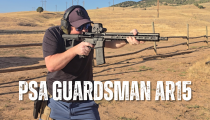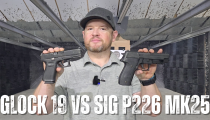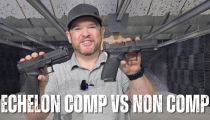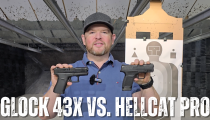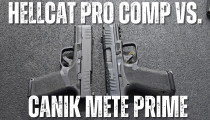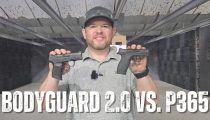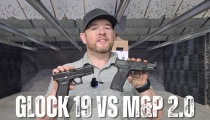Smith & Wesson Bodyguard 2.0 Review | Great Pocket Gun!
Get the Bodyguard 2.0 here: https://alnk.to/6xMujrl
Revised Article: Smith & Wesson Bodyguard 2.0 Review: Great Pocket Gun!
The Smith & Wesson Bodyguard 2.0 has taken the concealed carry world by storm, redefining what a pocket pistol can be. Chambered in .380 ACP, this micro-compact semi-auto blends impressive capacity, modern ergonomics, and reliable performance into a package small enough to slip into your pocket. But does it live up to the hype as the ultimate pocket gun? After extensive range time and carry testing, here’s our in-depth review of the Bodyguard 2.0 and why it’s a game-changer for everyday carry (EDC).
A Radical Redesign from the Original
The original Bodyguard .380, introduced in 2010, was a solid but unremarkable contender in the pocket pistol market. Its double-action-only (DAO) trigger and 6+1 capacity were functional but left room for improvement, especially when compared to competitors like the Ruger LCP. The Bodyguard 2.0, released in July 2024, is a complete overhaul, addressing nearly every criticism of its predecessor while pushing the boundaries of what a .380 pocket pistol can achieve.
At 5.5 inches long, 0.88 inches wide, and 4 inches tall (with the flush-fit magazine), the Bodyguard 2.0 is slightly larger than the original but remains highly concealable. Weighing just 9.8 ounces unloaded (14.7 ounces with a 12-round magazine), it’s lighter than many competitors, including some J-frame revolvers. The most striking upgrade is its capacity: a flush-fit 10+1 magazine and an extended 12+1 magazine, nearly doubling the round count of the original. This “stack-and-half” magazine design mirrors modern micro-9mm pistols, making the Bodyguard 2.0 a standout in the .380 category.
Key Features and Upgrades
Striker-Fired System and Trigger
Unlike the DAO hammer-fired original, the Bodyguard 2.0 uses a striker-fired mechanism, delivering a crisp, flat-faced trigger with a pull weight around 4 pounds, 2 ounces. The trigger has minimal take-up, a clean break, and a short reset, making it one of the best in its class. This upgrade significantly improves shootability, allowing for faster, more accurate follow-up shots—critical for a defensive pistol. However, some users have noted discomfort with the trigger safety’s design, which can pinch the finger during extended range sessions.
Ergonomics and Grip
The Bodyguard 2.0’s grip is a revelation for a pocket pistol. With aggressive yet comfortable 360-degree stippling, it provides a secure hold without tearing up your hand or clothing. The grip is long enough for most users to achieve a full one-handed grip with the 10-round magazine, and the 12-round extended magazine allows even large-handed shooters to get all fingers on board. The high grip cut and trigger guard undercut further enhance control, reducing the snappy recoil typical of .380 pocket guns. However, some shooters with larger hands have reported slide bite, so proper grip technique is essential.
Sights
Smith & Wesson equipped the Bodyguard 2.0 with exceptional sights for a pocket pistol. The front sight features a tritium vial with a high-visibility orange outline, paired with a blacked-out, serrated U-notch rear sight. This setup is fast to acquire and effective in low-light conditions, a rarity for micro-pistols. However, the wide U-notch has drawn criticism for making precise alignment challenging beyond 15 yards, with some users reporting tight but off-target groups at longer ranges. Aftermarket sight options are already emerging to address this, and drifting the factory sights can correct minor alignment issues.
Concealability
The Bodyguard 2.0 shines as a deep-concealment option. Its slim profile and rounded edges make it ideal for pocket carry, with minimal printing even in shorts or tight clothing. Paired with a quality pocket holster like the DeSantis Superfly or Vedder kydex, the pistol draws smoothly without snagging. For those preferring other carry methods, it works well in appendix or belly band holsters. The optional ambidextrous thumb safety (available on the TS model) adds peace of mind for pocket carry, though the NTS (no thumb safety) model relies on a trigger safety similar to a Glock.
Capacity and Size Efficiency
The 10+1 and 12+1 magazine options are a massive leap forward, offering capacity comparable to some micro-9mm pistols while maintaining a smaller footprint. Compared to the Ruger LCP Max (10+1) or Glock 42 (6+1), the Bodyguard 2.0 delivers more rounds in a similarly compact package. This efficiency makes it a compelling choice for those prioritizing both firepower and concealability.
Range Performance
On the range, the Bodyguard 2.0 defies expectations for a pocket .380. The low bore axis and redesigned recoil system tame muzzle rise, making it one of the softest-shooting pistols in its class—described by some as feeling like a lightweight .22 LR. Testers consistently report tight groups at 10 yards with ammunition like Fiocchi 95-grain FMJ and Federal Hydra-Shok Deep 99-grain JHP, with accuracy remaining solid out to 15 yards for defensive purposes. Beyond that, the short sight radius and wide rear notch can complicate precision, but this is a minor issue for a gun designed for close-range encounters.
Reliability is generally excellent, with most users reporting flawless performance across hundreds of rounds. However, some early adopters experienced feeding issues, particularly with the 12-round magazine, requiring a tap to chamber rounds. Smith & Wesson has addressed these through warranty service, often polishing the feed ramp, though proper lubrication appears critical to consistent function. A break-in period may also resolve minor magazine follower issues.
The pistol’s shootability is a standout feature. Unlike the original Bodyguard or Ruger LCP, which could be punishing to shoot, the 2.0 is genuinely enjoyable, encouraging practice without discomfort. That said, the gun can heat up quickly during extended range sessions, so gloves may be necessary for high round counts.
Carrying the Bodyguard 2.0
For pocket carry, the Bodyguard 2.0 is nearly unmatched. Its lightweight design and slim profile make it disappear in a pocket, whether in cargo shorts or dress pants. Testers report smooth draws with pocket holsters, and the lack of sharp edges prevents snagging. The pistol’s reliability with defensive hollow points, like Hornady American Gunner XTP, ensures it’s ready for real-world use. For those who prefer a manual safety, the TS model’s ambidextrous lever is easy to manipulate, though some find it stiff initially.
Compared to alternatives like the Ruger LCP Max or SIG P365, the Bodyguard 2.0 offers a better trigger and comparable capacity in a smaller, lighter package. However, its .380 ACP chambering is a trade-off. While modern .380 defensive ammo meets FBI minimum penetration standards, it lacks the stopping power of 9mm, making it a situational choice for summer carry or when wardrobe constraints limit larger options.
Pros and Cons
Pros
-
High Capacity: 10+1 or 12+1 rounds in a pocket-sized package.
-
Excellent Trigger: Crisp, light, and flat-faced for improved accuracy.
-
Ergonomic Grip: Comfortable and controllable, even for larger hands.
-
Concealability: Slim and lightweight for pocket or appendix carry.
-
Sights: Tritium front sight excels in low light, a rarity for pocket guns.
-
Shootability: Manageable recoil makes it fun and practical to train with.
Cons
-
Sight Limitations: Wide rear U-notch hinders precision beyond 15 yards.
-
Slide Bite: Potential issue for shooters with larger hands.
-
Break-In Period: Some units require break-in or lubrication to resolve feeding issues.
-
No Optics Option: Thin slide precludes red dot mounting, unlike some competitors.
-
.380 ACP Trade-Off: Less stopping power than 9mm for primary carry.
Is It the Best Pocket Gun?
The Smith & Wesson Bodyguard 2.0 is a triumph of engineering, packing modern features into a micro-pistol without sacrificing concealability. Its capacity, trigger, and ergonomics outclass most .380 competitors, making it a top contender for deep concealment. While it’s not perfect—sight precision and occasional reliability hiccups are notable—it’s a massive improvement over the original and a strong rival to the Ruger LCP Max.
Priced at an MSRP of $449 (often retailing around $400), the Bodyguard 2.0 offers excellent value for a reliable, high-capacity pocket pistol. For those seeking a lightweight, concealable EDC for summer or minimalist carry, it’s hard to beat. However, if you prioritize long-range accuracy or 9mm power, a micro-compact like the SIG P365 or S&W Shield Plus might be a better fit.
Final Verdict
The Bodyguard 2.0 isn’t just a great pocket gun—it’s arguably the best in its class. It balances capacity, shootability, and concealability in a way that few .380s can match. Whether you’re a seasoned shooter or new to concealed carry, this pistol deserves a spot in your rotation, especially for scenarios where larger guns won’t do. Test it at your local range, pair it with a quality holster, and you’ll likely find yourself as impressed as we are.
What are your thoughts on the Bodyguard 2.0? Have you tried it, or do you have another favorite pocket pistol? Let us know in the comments!


